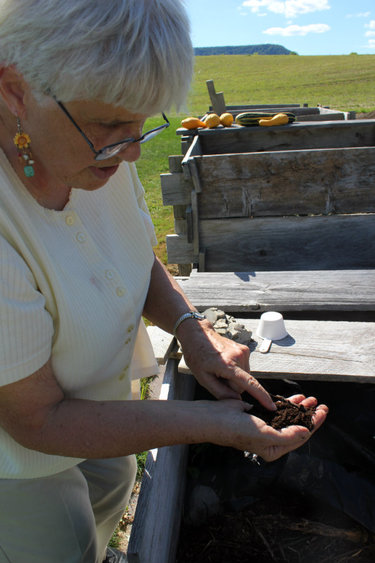Climate change brings about new challenge for gardeners
Many backyard gardeners rely on a routine of caretaking for their plants. But as temperatures rise and weather becomes more extreme, it has become necessary to adapt.
A noted change for gardeners has been a plant hardiness zone map with many zones “bumped up” to a higher temperature, according to Cornell Cooperative Extension Horticulture Educator Susan Pezzolla. The United States Department of Agriculture maps zones based on the annual average extreme minimum temperature from 1976 to 2005.
The most recent map was updated from a 1990 version that used data from 1974 to 1986. According the the USDA website, the map has generally become one-half zone warmer, but it doesn’t attribute this change entirely to climate change, but also to more sophisticated mapping technology.
The Arbor Day Foundation maps hardiness zones specifically for trees, using the average minimum temperature of an area. After updating its map from a 1990 version to a 2015 version, the foundation shows that much of the country is one zone warmer.
“I think people said it’s about time,” said Pezzolla of the change.
Master Gardener Martie Teumim noted the importance of distinguishing weather from climate. Climate is the average weather in an area, usually over the course of 30 years; weather is day to day. Teumim pointed out that the death of many knockout roses last winter due to cold weather could be used as evidence for naysayers of climate change, but that this is only an example of extreme weather.
“Climate is overall, so overall it’s warming up,” she said.
According to Pezzolla, many gardeners are welcoming the warmer weather, as they are able to grow plants they weren’t able to grow as easily before. Pezzolla noted a study that predicts California grapes will be able to grow in the Finger Lakes region in 50 years — and Finger Lakes grapes will be able to grow in Canada.

Teumim pointed out that the crepe myrtle — a flowering tree — can now grow in New York City where it once couldn’t.
However, climate change isn’t entirely beneficial to growers. In March of this year, said Pezzolla, it was warm enough for fruit trees to bloom, but the blossoms were killed off by freezing weather in April. The extreme weather resulted in many apple trees not bearing fruit.
“Apples are blooming eight days earlier now then they were in the 60s,” said Teumim, adding that grapes and lilacs are also blooming earlier, “So these are climate-change indicators.”
Extreme weather can also mean having long dry periods followed by hard and fast precipitation that doesn’t soak into the soil. Pezzolla even mentioned evergreen trees now have to be watered in the spring and summer so that they don’t brown in the winter.
According to Master Gardener Phyllis Rosenblum, precipitation has increased in the winter and decreased in the summer and fall. The, issue she said, is the heavy rainstorms: According to a 2011 report from Cornell University, there has been a 67-percent increase in the number of two-inch rainfalls over a 48-hour period since the 1950s.
When a lighter rain soaked the ground so that crops would grow, Rosenblum said her father — an Illinois farmer — would call it a “soaker.” But when rain fell so hard it would only run off the ground, he would call it a “gully washer.” “Gully washers” have been increasing in frequency, said Rosenblum, and their inability to properly water crops may be an increasing problem.
To deal with these new conditions, Pezzolla recommended spraying water on or wrapping fruit in cloth to regulate temperature when it becomes unusually cold or warm. To combat dry periods, she encouraged gardeners to conserve water with rain barrels or soaker hoses, as well as growing native plants that may be more tolerant of dry conditions. She also suggested that mulch be used in most gardens, even vegetable gardens, and overall advocated conserving resources when gardening.
“What scares me is when people say something like, ‘Well, I’m just one person, there’s nothing I can do,’” she said.
Teumim encouraged preventing climate change with activities like composting, using push mowers, and buying locally to save on gas.
“From a gardening perspective, things are changing,” said Rosenblum, who plants a variety of vegetables and flowers on the property surrounding her home near Altamont.
Rosenblum noted that gardeners, often used to a routine, will have to be able to adapt to unpredictable weather patterns.
“We’re going to have to be flexible,” she said, “We’re going to have to keep adjusting.
